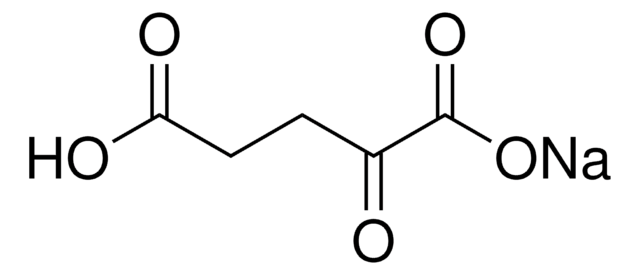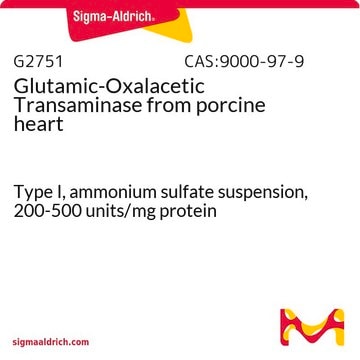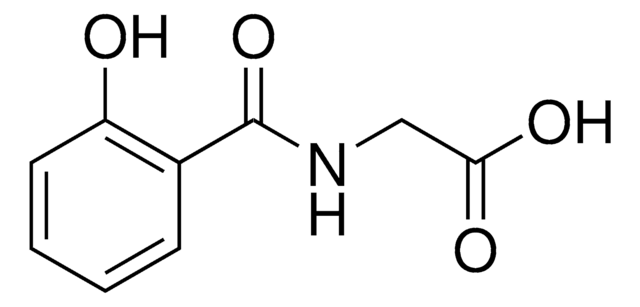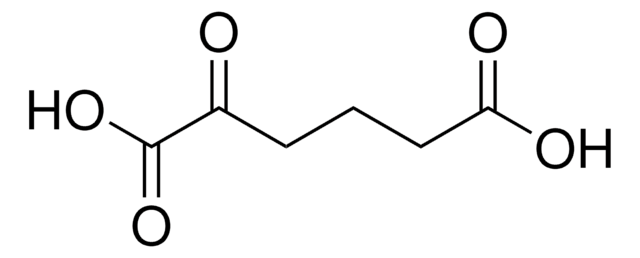K1750
α-Ketoglutaric acid
≥98.5% (NaOH, titration)
Synonym(s):
2-Oxoglutaric acid, 2-Oxopentanedioic acid
About This Item
Recommended Products
Quality Level
Assay
≥98.5% (NaOH, titration)
form
powder
solubility
water: 100 mg/mL, clear to slightly hazy, colorless to faintly yellow
storage temp.
2-8°C
SMILES string
OC(=O)CCC(=O)C(O)=O
InChI
1S/C5H6O5/c6-3(5(9)10)1-2-4(7)8/h1-2H2,(H,7,8)(H,9,10)
InChI key
KPGXRSRHYNQIFN-UHFFFAOYSA-N
Looking for similar products? Visit Product Comparison Guide
General description
Application
- to study its effects on swine fecal microflora in an in vitro fermentation system
- to study its effects on the activation of CD8+ T-cells
- as a substrate in glutamate oxaloacetate transaminase (GOT2) mitochondrial lysate assay
Biochem/physiol Actions
Signal Word
Danger
Hazard Statements
Precautionary Statements
Hazard Classifications
Eye Dam. 1
Storage Class Code
11 - Combustible Solids
WGK
WGK 3
Flash Point(F)
Not applicable
Flash Point(C)
Not applicable
Personal Protective Equipment
Certificates of Analysis (COA)
Search for Certificates of Analysis (COA) by entering the products Lot/Batch Number. Lot and Batch Numbers can be found on a product’s label following the words ‘Lot’ or ‘Batch’.
Already Own This Product?
Find documentation for the products that you have recently purchased in the Document Library.
Customers Also Viewed
Our team of scientists has experience in all areas of research including Life Science, Material Science, Chemical Synthesis, Chromatography, Analytical and many others.
Contact Technical Service












